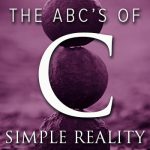Culture is an expression of the beliefs, attitudes and values of a people or we could say that culture is an expression of the worldview of a people. In this article we take a developmental or evolutionary approach to defining culture that has a linear aspect to it but recognizes that the evolution of cultural stages can exist simultaneously within the same society. Sociologists have used a three-stage basic model, the traditional, the modern and the postmodern culture.
The traditional culture is nationalistic, patriarchal, fundamentalist, and has a mythic-literal orientation, for example, believing in a literal interpretation of sacred religious texts. The American neo-conservatives with their “focus on the family,” ethnocentrism, “axis of evil” paranoia, and “my way or the highway” religion exemplifies the American traditional culture.
Beginning with the Enlightenment we have the modern culture which characterizes most industrial democracies. The heart of this culture, which is 400 years old, is scientific materialism based on the scientific method. The orientation is science, free-market economies, democracy and “rationalism” based on universal truths that can be observed and replicated. It is a very anthropocentric culture. On the personal level human beings are looking away from God and into the mirror of narcissism.
There are no absolutes in the postmodern culture. Reality comes from human interpretation and all worldviews have validity. There is no right or wrong; pluralism and tolerance are the hallmarks of this stage of cultural development. Born in the sixties this culture is only 40 years old and gave birth to feminism, civil rights, environmental protection and health care reforms. The belief in the omnipotence of science, reason and the mind are slowly being seen as an illusion.
All societies today have mixtures of these three levels of development and although there are “higher” levels of development, these are the three that predominate in the world. Paul Ray’s book The Cultural Creatives estimates that the respective population numbers in the United States are: traditional—20%: modern—50%; and postmodern—25%.
The next step for the world’s cultures is, of course, paradigm A, a synthesis of the perennial wisdom. Seeing the world of form as an illusion, narcissism as self-destructive, and our intuitive wisdom found within each person as the only way out of our dilemma.
Matthieu Ricard, author, Buddhist and scientist, has a broad perspective that gives depth and credibility to his insights which are familiar to readers of this article. “The culture is training people’s minds in one direction [P-B] right now. They need to see that another direction is possible.”[i] This change in direction is always what the mystics throughout human history have advocated.
Seeing a connection between Buddhism and neuroscience, physicist Arthur Zajonc edited The New Physics and Cosmology: Dialogues with the Dalai Lama. He also sees humanity headed in an unsustainable direction, choosing a culture that threatens to create more intense human suffering. “Our technological advancement far outstrips our ethical development, our capacity to make sound judgments about what we’ve unleashed.”[ii] Science and technology, as many of us know, cannot solve the increasingly complex problems of a disintegrating global culture. A paradigm shift to P-A would give us the sustainable culture we all long for.
[i] Boyce, Barry. “Two Sciences of Mind.” Shambhala Sun. Boulder, Colorado, September 2005, p. 43.
[ii] Ibid.



